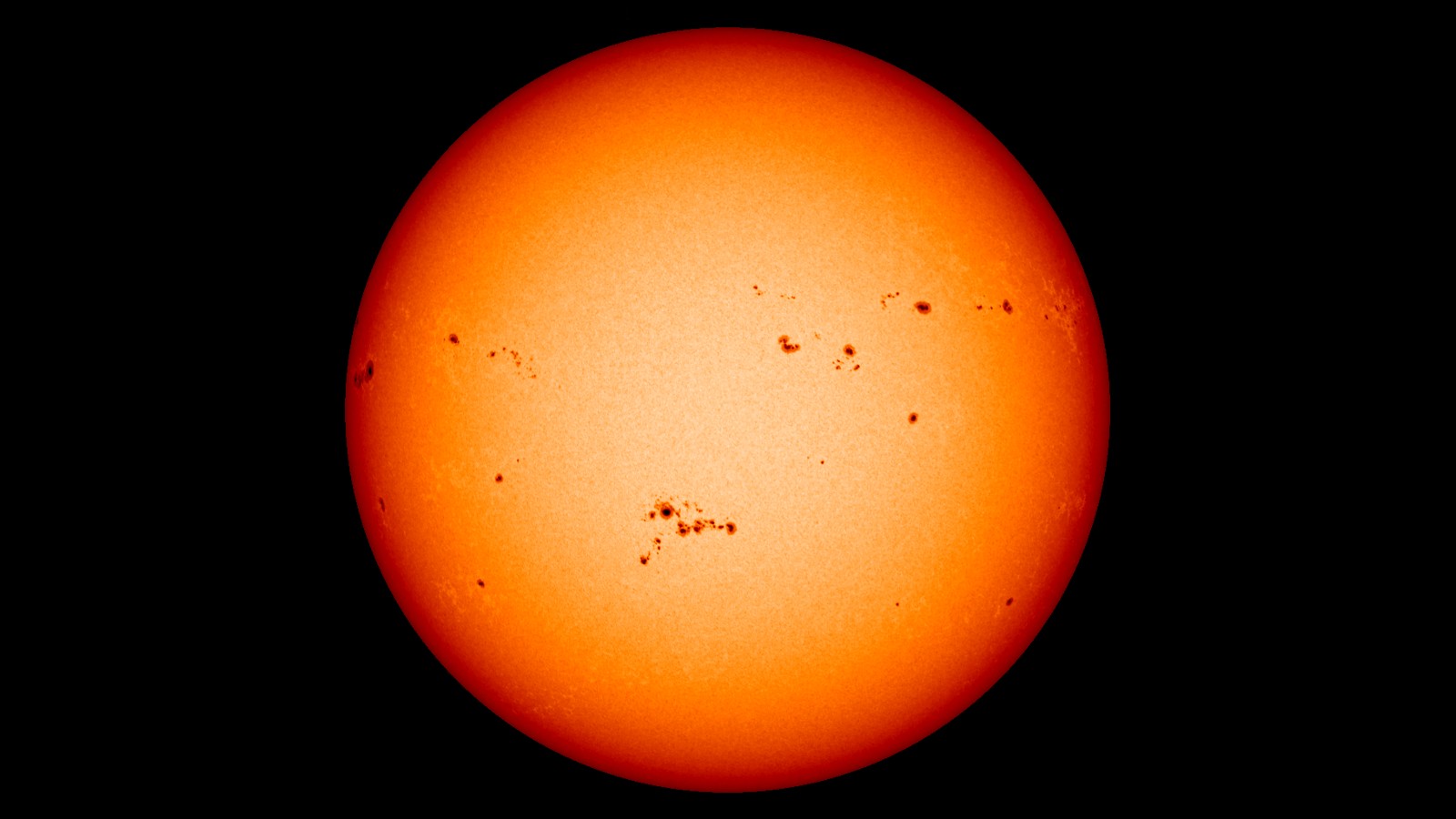Home>Weather and Climate>Understanding The Temperature Variations In Earth’s Layers


Weather and Climate
Understanding The Temperature Variations In Earth’s Layers
Published: March 5, 2024
Explore the temperature variations in Earth's layers and gain insights into the impact of weather and climate on the planet's dynamic systems. Understand the intricate relationship between weather and climate through this comprehensive analysis.
(Many of the links in this article redirect to a specific reviewed product. Your purchase of these products through affiliate links helps to generate commission for Temperatures.com, at no extra cost. Learn more)
Table of Contents
Introduction
The Earth is a dynamic and complex system, with its layers exhibiting diverse temperature variations. Understanding these temperature fluctuations is crucial for comprehending the planet's geophysical processes and their impact on the environment. From the outermost layer, the crust, to the innermost core, each segment plays a unique role in shaping the Earth's climate and geological phenomena.
As we delve into the intricate layers of the Earth, we will uncover the fascinating interplay between temperature and geological activities. Exploring the temperature variations within each layer will provide valuable insights into the planet's thermal dynamics and its influence on weather patterns, tectonic movements, and volcanic activities. Let's embark on this enlightening journey to unravel the mysteries of the Earth's temperature differentials and their profound implications for our planet's dynamic systems.
The Earth's Crust and Temperature Variations
The Earth's crust, the outermost layer of the planet, is a dynamic and diverse realm characterized by intriguing temperature variations. This thin but resilient layer, ranging from 5 to 70 kilometers in thickness beneath the continents and about 5 to 10 kilometers beneath the ocean floors, plays a pivotal role in shaping the Earth's geology and climate. The temperature within the crust fluctuates significantly, influenced by various factors such as depth, location, and geological activities.
At the surface, the temperature of the Earth's crust is greatly influenced by solar radiation. As the sun's rays penetrate the crust, they heat the uppermost layers, resulting in diurnal temperature variations. In regions with intense solar exposure, such as deserts, the surface temperature can soar during the day and plummet at night. This rapid fluctuation in surface temperature is a testament to the dynamic nature of the Earth's crust.
As we descend deeper into the crust, the temperature gradient becomes more pronounced. On average, the temperature increases by approximately 25 to 30 degrees Celsius per kilometer of depth. This phenomenon, known as the geothermal gradient, is a fundamental characteristic of the Earth's crust. The geothermal gradient varies across different regions, influenced by factors such as tectonic activity, thermal conductivity of rocks, and the presence of geothermal reservoirs.
In areas with active tectonic processes, such as subduction zones and volcanic regions, the temperature within the crust can exhibit remarkable variations. The intense heat generated by magma chambers and subterranean volcanic activity contributes to localized temperature anomalies, shaping the geological landscape and fostering unique ecosystems. Moreover, the presence of geothermal reservoirs in certain regions augments the temperature differentials within the crust, offering opportunities for sustainable geothermal energy extraction.
The Earth's crust serves as a dynamic interface where temperature differentials give rise to diverse geological phenomena, including the formation of mountains, the eruption of volcanoes, and the evolution of mineral deposits. By comprehending the intricate temperature variations within the crust, scientists can gain valuable insights into the Earth's thermal dynamics and its profound influence on weather patterns, seismic activities, and the distribution of natural resources.
In essence, the temperature variations within the Earth's crust are a testament to the dynamic interplay between geology and climate. By unraveling the complexities of these temperature differentials, we can deepen our understanding of the Earth's intricate systems and their enduring impact on our planet's evolution.
The Mantle and Temperature Variations
The mantle, a vast and enigmatic layer sandwiched between the Earth's crust and core, is a realm of profound geological significance, characterized by intriguing temperature differentials. Extending from the crust-mantle boundary to the outer core, the mantle encompasses approximately 84% of the Earth's total volume, making it a pivotal component of the planet's geophysical dynamics.
Within the mantle, temperature variations play a pivotal role in driving convective currents and tectonic movements, shaping the Earth's surface and influencing global climatic patterns. The temperature within the mantle exhibits a remarkable gradient, with the upper mantle experiencing lower temperatures compared to the lower mantle. This stark contrast in temperature is a result of the mantle's thermal structure, which is influenced by heat transfer processes, radioactive decay of elements, and the residual heat from the Earth's formation.
In the upper mantle, which extends from the crust-mantle boundary to a depth of approximately 670 kilometers, the temperature ranges from around 500 to 900 degrees Celsius. This relatively lower temperature regime is conducive to the formation of rigid lithospheric plates, which float atop the semi-fluid asthenosphere. The temperature differentials within the upper mantle contribute to the generation of convection currents, driving the lateral movement of tectonic plates and fostering the dynamic processes of seafloor spreading and subduction zones.
Descending into the lower mantle, which extends from a depth of 670 kilometers to the core-mantle boundary at approximately 2,900 kilometers, the temperature undergoes a substantial increase. Here, the temperature ranges from approximately 1,600 to 3,500 degrees Celsius, marking a significant transition to higher thermal regimes. The intense heat within the lower mantle fuels vigorous convection currents, driving the slow but relentless movement of mantle material and influencing the Earth's long-term geological evolution.
The temperature variations within the mantle are intrinsically linked to the planet's tectonic activities, volcanic eruptions, and the redistribution of heat across the Earth's surface. By comprehending the intricate temperature differentials within the mantle, scientists can unravel the complex interplay between thermal dynamics and geological processes, shedding light on the Earth's dynamic evolution over geological timescales.
In essence, the temperature variations within the mantle are a testament to the profound influence of thermal gradients on the Earth's geophysical dynamics. By delving into the complexities of these temperature differentials, we can gain invaluable insights into the intricate mechanisms that govern the planet's tectonic activities and their enduring impact on the Earth's ever-changing landscape.
The Outer Core and Temperature Variations
The outer core, a region of immense significance nestled beneath the Earth's mantle, is characterized by profound temperature differentials that underpin its pivotal role in shaping the planet's geophysical dynamics. Extending from the core-mantle boundary to a depth of approximately 2,890 kilometers, the outer core represents a critical domain where intense heat and molten iron-nickel alloys converge to generate remarkable thermal gradients.
Within the outer core, temperature variations play a fundamental role in driving the dynamic processes of geomagnetic phenomena, influencing the Earth's magnetic field and fostering a complex interplay between thermal convection and magnetic induction. The temperature within the outer core ranges from approximately 3,000 to 4,500 degrees Celsius, marking a transition to an intensely hot and fluid regime. This remarkable thermal environment is conducive to the generation of vigorous thermal convection currents, where the upwelling and downward movement of molten metals drive the generation of the Earth's magnetic field through the geodynamo process.
The temperature differentials within the outer core are intricately linked to the generation and sustenance of the Earth's magnetic field, a vital shield that protects the planet from solar winds and cosmic radiation. The intense heat within the outer core fuels the convective motion of molten metals, generating electric currents that, in turn, induce the magnetic field. This dynamic interplay between temperature variations and magnetic induction within the outer core underscores its pivotal role in safeguarding the Earth's atmosphere and fostering a habitable environment for diverse forms of life.
Furthermore, the temperature differentials within the outer core contribute to the dynamic processes of geomagnetic reversals, where the Earth's magnetic field undergoes periodic fluctuations in polarity. These reversals, driven by the complex thermal dynamics within the outer core, leave enduring imprints in the planet's geological record, offering valuable insights into the Earth's ancient magnetic history and its profound influence on the planet's evolutionary trajectory.
In essence, the temperature variations within the outer core are a testament to the intricate interplay between thermal convection and magnetic induction, shaping the Earth's magnetic field and fostering a protective shield that is vital for the planet's long-term sustainability. By unraveling the complexities of these temperature differentials, scientists can gain profound insights into the dynamic processes that govern the Earth's magnetic phenomena and their enduring impact on the planet's geophysical evolution.
The Inner Core and Temperature Variations
The inner core, a realm of profound significance nestled at the heart of the Earth, is characterized by remarkable temperature differentials that underpin its pivotal role in shaping the planet's geophysical dynamics. Situated at the center of the Earth, beneath the outer core, the inner core represents a critical domain where intense heat and immense pressure converge to generate extraordinary thermal gradients.
The temperature within the inner core ranges from approximately 5,000 to 6,000 degrees Celsius, marking a transition to an intensely hot and solid regime. This remarkable thermal environment is a result of the immense pressure exerted by the overlying layers, compressing the iron-nickel alloy to a solid state despite the intense heat. The temperature differentials within the inner core are fundamental to its seismic properties, influencing the propagation of seismic waves and providing valuable insights into the Earth's internal structure.
The temperature variations within the inner core play a pivotal role in governing the behavior of seismic waves as they traverse through the Earth's interior. The solid-state nature of the inner core, coupled with its intense temperature regime, gives rise to distinct seismic properties, such as the phenomenon of seismic anisotropy. This unique characteristic, influenced by the alignment of iron crystals due to the temperature differentials, contributes to the varying speeds and pathways of seismic waves as they propagate through the inner core, offering crucial clues about the Earth's deep interior.
Furthermore, the temperature differentials within the inner core are intrinsically linked to the planet's magnetic field and its long-term stability. The intense heat within the inner core, coupled with the solid-state nature of its iron-nickel alloy, generates convective currents that influence the Earth's magnetic field through the geodynamo process. This dynamic interplay between temperature variations and magnetic induction within the inner core underscores its pivotal role in sustaining the Earth's magnetic field and fostering a protective shield against solar winds and cosmic radiation.
In essence, the temperature variations within the inner core are a testament to the intricate interplay between thermal gradients and seismic properties, shaping our understanding of the Earth's deep interior and its profound influence on the planet's geophysical evolution. By unraveling the complexities of these temperature differentials, scientists can gain profound insights into the dynamic processes that govern the Earth's seismic phenomena and its magnetic field, offering invaluable contributions to our understanding of the planet's internal dynamics.
Conclusion
The temperature variations within the Earth's layers, from the crust to the inner core, unveil a captivating tapestry of thermal dynamics that profoundly influence the planet's geophysical processes. As we journeyed through the intricate realms of the Earth, we discovered the profound interplay between temperature differentials and geological phenomena, shedding light on the planet's dynamic evolution over geological timescales.
From the Earth's crust, where solar radiation and geothermal gradients shape the surface temperature, to the mantle, where thermal convection drives tectonic movements and volcanic activities, the temperature variations within each layer are intrinsic to the Earth's dynamic systems. The outer core, with its intense heat fueling the generation of the Earth's magnetic field, and the inner core, where remarkable temperature differentials influence seismic properties and magnetic induction, further underscore the profound influence of thermal gradients on the planet's geophysical dynamics.
By unraveling the complexities of these temperature differentials, scientists gain invaluable insights into the Earth's thermal dynamics, seismic phenomena, and magnetic field, offering profound contributions to our understanding of the planet's internal processes. The temperature variations within the Earth's layers serve as a testament to the intricate mechanisms that govern the planet's geological and climatic phenomena, shaping its enduring impact on the Earth's ever-changing landscape.
In essence, the temperature differentials within the Earth's layers are a testament to the dynamic interplay between thermal gradients and geological activities, offering a window into the planet's deep interior and its profound influence on the Earth's evolutionary trajectory. As we continue to unravel the mysteries of the Earth's temperature variations, we embark on a journey of discovery, deepening our understanding of the planet's dynamic systems and their enduring impact on our world.














